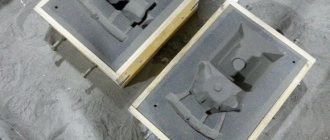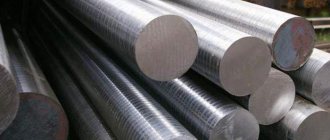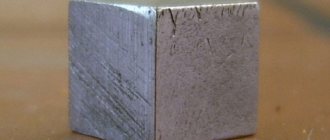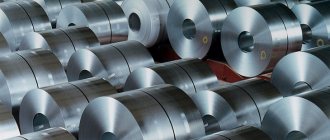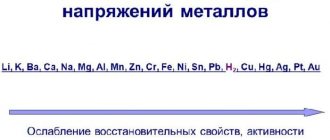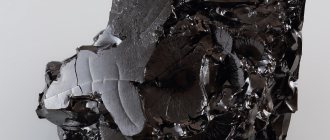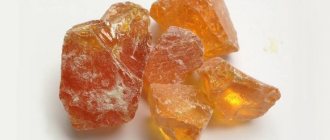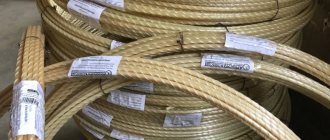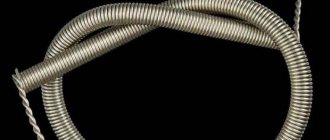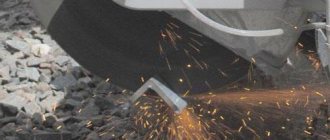Carbides are compounds of metals and non-metals with carbon. Typically, in such compounds, carbon has a greater electronegativity than the second element, which allows oxides, halogens, and other carbon compounds to be excluded from the group.
These are solid, refractory substances, non-volatile and insoluble. Basically, they have a variety of properties: some, for example, gold carbide, can explode if you try to pour it, and some of the compounds, for example, boron, zirconium, titanium, silicon and tungsten, are harder than diamond and are resistant to acids and solvents.
Historical reference
The first unusual carbon compound, similar to carbide, was obtained at the beginning of the 19th century by the Englishman Davy.
It was potassium carbide. Then, in 1863, unstable copper carbide was found, and 15 years later, iron carbide. Officially, the formations “appeared” only at the end of the 19th century - the Frenchman Henri Moisson had a hand in them. He made connections using a voltaic arc in an electric furnace, which he himself invented. For this purpose, charcoal heated to a red-hot state, pure metals and their oxides were used.
However, several years before Moisson, the mineral cohenite was discovered in meteorites - a mixture of cobalt, iron and nickel carbides. In a sense, this find helped answer the question “What are carbides?”
Storage and transportation
Since carbide, when reacting with moisture, leads to the release of large amounts of heat and explosive acetylene gas, this substance is stored in sealed tanks or drums. Working with such tanks requires special care. Acetylene gas is lighter than air and is capable of self-ignition, while it has a narcotic effect
. When opening drums with carbide, a special tool is used to prevent the occurrence of sparks, and if the substance gets on the skin, you must immediately rinse the affected area with water and lubricate it with a rich cream.
Storage areas must be well ventilated, and keeping other substances in the vicinity is prohibited. This may lead to dangerous reactions. Improper storage can either explode the carbide or render it unusable.
The shelf life is only up to six months.
Transportation is carried out only by covered transport. Air delivery is prohibited.
Connection properties
Like other elements, carbides have a certain set of properties that make them a popular material in the construction and mechanical engineering markets.
- High hardness - unlike pure metal, the compounds are the hardest, which allows them to be used in a wide variety of applications;
- High melting point - they are significantly higher than the melting point of similar metals;
- Corrosion resistance . Some options are quite resistant to acids and external factors.
- Good thermal conductivity and heat resistance , allowing the mixture to be used at both high and low temperatures;
- Increased wear resistance prevents parts made of the material from deteriorating ahead of time.
Depending on the metal and non-metal, elements have a variety of properties that change depending on the initial data.
How can this be useful in life?
Well, firstly, knowledge of chemical compounds can never be superfluous. It is always better to be armed with knowledge than to be left without it. Secondly, the more you know about the existence of certain compounds, the better you understand the mechanism of their formation and the laws that allow them to exist.
Before moving on to the end, I would like to give some recommendations for studying this material.
Types of carbides
All substances can be divided into three groups:
- Covalent ones are formed by bromine and silicon; chemically inert, carbon atoms are in a state of sp-, sp2-, sp3-hybridization. It is formed by partial replacement of carbon atoms in diamond with bromine and silicon atoms. They have strong interatomic bonds, high melting points, heat resistance, chemical inertness, and are semiconductors. Bromine carbide is quite hard and can even scratch diamonds. Silicon carbide turns out to be more fragile, but chemically stable, oxidizes when exposed to oxygen only at temperatures above 1000 degrees Celsius, and dissolves in aqua regia and concentrated nitric acid and hydrofluoric acid.
- Salt-like or ionic are compounds formed by metals of groups I and II, as well as aluminum, rare earth elements and actinides. They are obtained directly from the elements or by reduction of carbon oxides. They are usually decomposed by water and acids, releasing a hydrocarbon and leaving a metal hydroxide. They have a high melting point.
- Metal-like or ionic-covalent-metallic are compounds that are formed by transition metals of groups IV–VII, as well as nickel, iron and cobalt; have intermediate chemical activity. In such compounds, small carbon atoms are located in the voids between the metal atoms. This is where the name interstitial carbides comes from. They are characterized by high strength and melting point.
In turn, ionic compounds are divided into:
- Methanides are usually transparent, colorless, and decompose in dilute acids and water to form methane. These include magnesium, aluminum and beryllium carbide.
- Acetylenides are actively hydrolyzed and form acetylene or ethylene. The best known is calcium carbide.
Related materials
In addition to carbides, there are other groups of related carbon compounds:[2]
- graphite intercalation compounds
- alkali metal fullerides
- endohedral fullerenes, where the metal atom is enclosed in a fullerene molecule
- metallacarbohedrenes (methcarbons), which are cluster compounds containing C2 units.
- tunable nanoporous carbon, where gas chlorination of metal carbides removes metal molecules to form a highly porous, nearly pure carbon material capable of high-density energy storage.
- carbene complexes of transition metals.
- two-dimensional transition metal carbides: MXenes
Application
The elements are used to give cast iron and various types of steel hardness and increase their wear resistance. Tungsten and titanium carbides, as the hardest and most refractory options, are used for the manufacture of cutting tools, as well as for the production of superhard materials. Due to their good chemical and physical properties, the substances are used as a component of refractory materials, resistance rods of electric heating devices and as an abrasive material.
Calcium carbide is also called welding carbide. This is an ideal substance for welding: upon contact with water, it releases acetylene, a volatile gas that is the basis for oxygen welding, metallization, cutting and soldering.
In other words, when processing metal, the compound reacts and begins to release a huge amount of heat and acetylene , which supports combustion. The temperature can reach 3150 degrees Celsius. When working with the substance, you must strictly adhere to safety rules: store the mixture correctly, remember that it ignites easily, try not to come into contact with the toxic field.
Story
Metal carbides, the formulas of which we give below, are not natural compounds. This is due to the fact that their molecules tend to disintegrate when interacting with water. Therefore, it is worth talking here about the first attempts to synthesize carbides.
Since 1849, there have been references to the synthesis of silicon carbide, but some of these attempts remain unrecognized. Large-scale production began in 1893 by the American chemist Edward Acheson using a method that was later named after him.
The history of the synthesis of calcium carbide is also not very rich in information. In 1862, the German chemist Friedrich Wöhler obtained it by heating fused zinc and calcium with coal.
Now let's move on to more interesting sections: chemical and physical properties. After all, they contain the whole essence of the use of this class of substances.
Price
Calcium carbide can be purchased on the market at a price of 80 rubles per kilogram. This mixture is sold in barrels or special bags. The substance with silicon is not much more expensive. Its cost is 82 rubles per kilogram. But tungsten carbide will cost 1,400 rubles per kilo. Moreover, a minimum purchase weight can be set, for example, from 10 kg. Boron carbide will cost even more - from 2000 rubles, and packaging starts from 35 kilograms. The cost of connections with hafnium or molybdenum is negotiated with the supplier separately.
Carbide
(Carbidkohie, carbone de recuit) - is a certain chemical compound of iron with carbon, corresponding to the formula Fe 3 C 4, found in well-tempered steel. It has been known since ancient times that carbon in cast iron is in two different forms: a) in the form of graphite, released during the slow cooling of cast iron, and b) in the form of carbon chemically bound to iron. Thanks to the work of Rinman, Carsten, Caron, Ockerman and others, who studied the properties of hardened and unhardened steel, it turned out that the combined carbon in these different states of steel is in two forms. One of them, found in well-hardened steel, when treated with cold and dilute sulfuric or hydrochloric acid, almost all gives hydrocarbons or dissolves; the other, located in well-tempered steel, leaves, during such treatment, a rather significant deposit of amorphous carbon, which disappears only with prolonged boiling. The first of them is called hardening carbon
(Hartungskohle), and the second -
cementing carbon
(Cementkohle).
Caron argued that cementing carbon is free carbon, which combines with iron, i.e., turns into hardening carbon, only under the influence of rapid cooling or hammer blows. Professor Müller, exposing steel to the action of dilute sulfuric acid in an atmosphere of illuminating gas, found that the quenching carbon was converted into hydrocarbon, and the residue was a special solid substance with magnetic properties and consisting mainly of iron and carbon; in addition, from ½ to 1% water and a small amount of phosphorus. The carbon content of these residues ranged from 6.6-7.7. At the same time, the English scientists Abel and M. Dering were studying this issue and also came to similar results. In their research, they used a solution of chromic acid consisting of 90 g. sulfuric acid mixed with 100 gr. dichromopotassium salt. They came to the following conclusion: a) that in unquenched or well-tempered steel, carbon is distributed evenly throughout the entire mass in the form of a certain chemical compound with iron, carbide,
whose composition is Fe 3 C 4;
b) that in hardened steel the carbon is in an amorphous state and does not form any specific compound with iron. If you release the hardened steel, then the carbon from the amorphous state goes back into combination with iron in the form of K. When a piece of steel heated to a high temperature cools slowly, K is formed and is distributed evenly throughout the rest of the iron mass. When steel is cooled rapidly, this connection cannot form. Finally, Osmond and Werth, although in a different way, also came to the same result. By isolating a carbon compound from steel using the Weils method, i.e., decomposing a piece of steel using a galvanic current, they obtained a precipitate that consisted of small microscopic sparkles attracted by a magnet and, as analysis showed, consisted of iron, carbon and a certain amount of water. This is the same compound of carbon with iron that Abel called K., Caron - cementing carbon,
Osmond and Werth -
annealing carbon
(Glühkohle), Ledebur -
carbon of a normal carbon compound
(gewöhnliche Carbidkohle);
Sorby in his microscopic studies - pearl constituent
of iron, and Howe -
perlite
(Perlyte), and finally, Wedding -
crystalline iron
(Krystalleisen).
From their microscopic studies, Osmond and Werth came to the conclusion that carbon, distributed evenly in steel, forms a continuous mesh in the mass of metal, in the spaces of which metallic iron is placed. In their opinion, steel is formed from small multifaceted granules of soft iron surrounded by carbon iron, i.e., from individual cells, the core of which is soft iron, and the shell is K. This K. also serves as cement,
i.e. binder for adjacent cells. In hardened steel, the sparkles of carbon are found in small quantities and in a separated state, and in this case the carbon does not play the role of a shell, but is evenly distributed throughout the entire mass of the steel. As with most chemical phenomena, here too, during the formation of carbon or its transition to hardening carbon, we notice the absorption or release of heat (see Recalescence), which occurs at approximately 700°. Thus, K. represents a certain compound that is released during the slow and gradual cooling of steel (heated to a light red heat) between 700° and 600°; according to Osmond, it is distributed in the form of a network bordering the grains of soft iron, although, according to Wedding and Ledebour, on the contrary, this carbonaceous iron is distributed in the mass of steel in the form of grains.
Literature:
"Comptes Rendus" (vol. LVI, pp. 43-211); "Zeitschrift des Vereins deutscher Ingenieure" (vol. XXII, p. 385); "Stahl und Eisen" (1888, vol. VIII, p. 291); "Metallurgy of Steel"; M. Howe; "Stahl und Eisen" (1885, vol. V, p. 489; 1886, p. 379; 1887, p. 448; 1888, p. 369); "Mining Journal" (1886, vol. III, p. 138; 1886, no. 9; 1888, no. 2 and 1889, no. 1); Osmond, “Transformation du Fer et du Carbonne dans les fers”; Osmond et Werth, "La théorie cellulaire des proprietés de l'acier" (in Ann. des Mines, 1885, vol. 8, p. 5); F. Abel, "Carbon in Steel" (in "Engineering", 1886, vol. XXXIV, p. 150).
A. Rzheshotarsky.
Δ
.
Encyclopedic Dictionary F.A.
Brockhaus and I.A. Efron. - St. Petersburg: Brockhaus-Efron. 1890-1907. Synonyms
:
See what “Carbide” is in other dictionaries:
- A foul substance with an extremely strong suffocating odor; a compound of iron and carbon. A complete dictionary of foreign words that have come into use in the Russian language. Popov M., 1907. carbide carbide, m [lat. carbo charcoal + gr. species] (chemical). Connections ... Dictionary of foreign words of the Russian language
carbide
- a, m. carbide m. <lat. carbo + gr. eidos type special A combination of metal and carbon. Iron carbide. Calcium carbide. BAS 1. Carbide aya, oh. ♦ Carbide lamp. A lamp in which acetylene burns is obtained by the action of water on calcium carbide. BAS 1.… …Historical Dictionary of Gallicisms of the Russian Language
Depending on the context means: Calcium carbide, a compound used to produce acetylene Carbide, as a compound of metal with carbon, see Carbides ... Wikipedia
Cementite Dictionary of Russian synonyms. carbide noun, number of synonyms: 1 cementite (1) ASIS Dictionary of Synonyms. V.N. Trishin. 2013 ... Dictionary of synonyms
CARBIDE, carbide, many. no, husband (from Latin carbo coal) (chemical). Connection of elements, preferably metal with carbon. Ushakov's explanatory dictionary. D.N. Ushakov. 1935 1940 ... Ushakov's Explanatory Dictionary
CARBIDE, huh, husband. A chemical combination of carbon with metals and certain non-metals. | adj. carbide, oh, oh. Ozhegov's explanatory dictionary. S.I. Ozhegov, N.Yu. Shvedova. 1949 1992 ... Ozhegov's Explanatory Dictionary
- (Carbidkohle, carbone de recuit) is a certain chemical compound of iron with carbon, corresponding to the formula Fe3C4, found in well-tempered steel. It has been known since ancient times that carbon in cast iron is found in two... ... Encyclopedia of Brockhaus and Efron
Carbide
- - a combination of metals and some non-metals with carbon. Used in technology... Oil and gas microencyclopedia
carbide
— A chemical compound of carbon with one or more metallic elements. Subjects metallurgy in general EN carbide ... Technical Translator's Guide
carbide
— [کربيد] yu. moddai khimiyavi iborat az omezishi filiz bo carbon; charogi carbide charoge, ki bo carbide mesuzad... Farhangi tafsiriya zaboni togiki
Carbide Carbide. A chemical compound of carbon with one or more metal elements. (Source: “Metals and alloys. Directory.” Edited by Yu.P. Solntsev; NPO Professional, NPO Mir and Family; St. Petersburg, 2003) ... Dictionary of metallurgical terms
